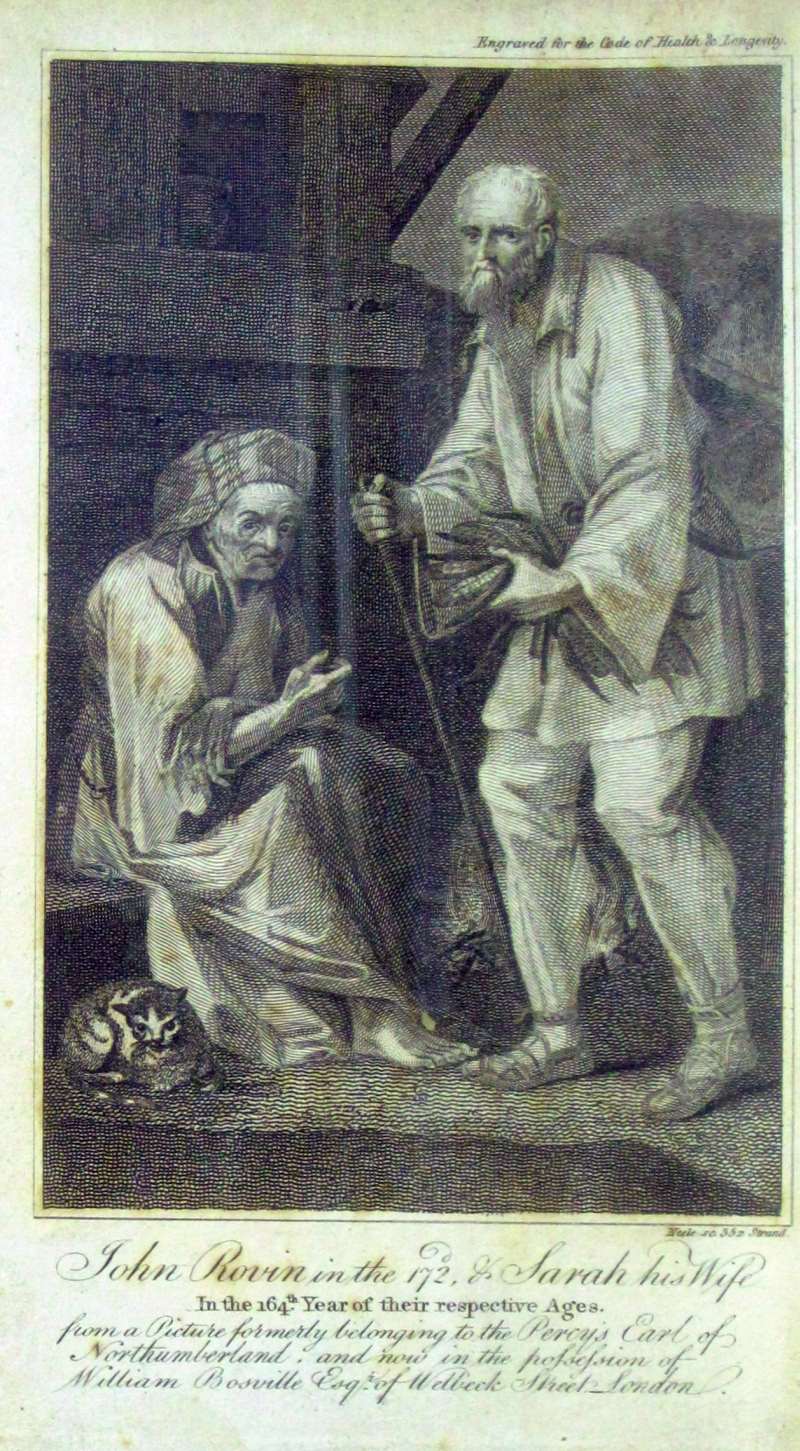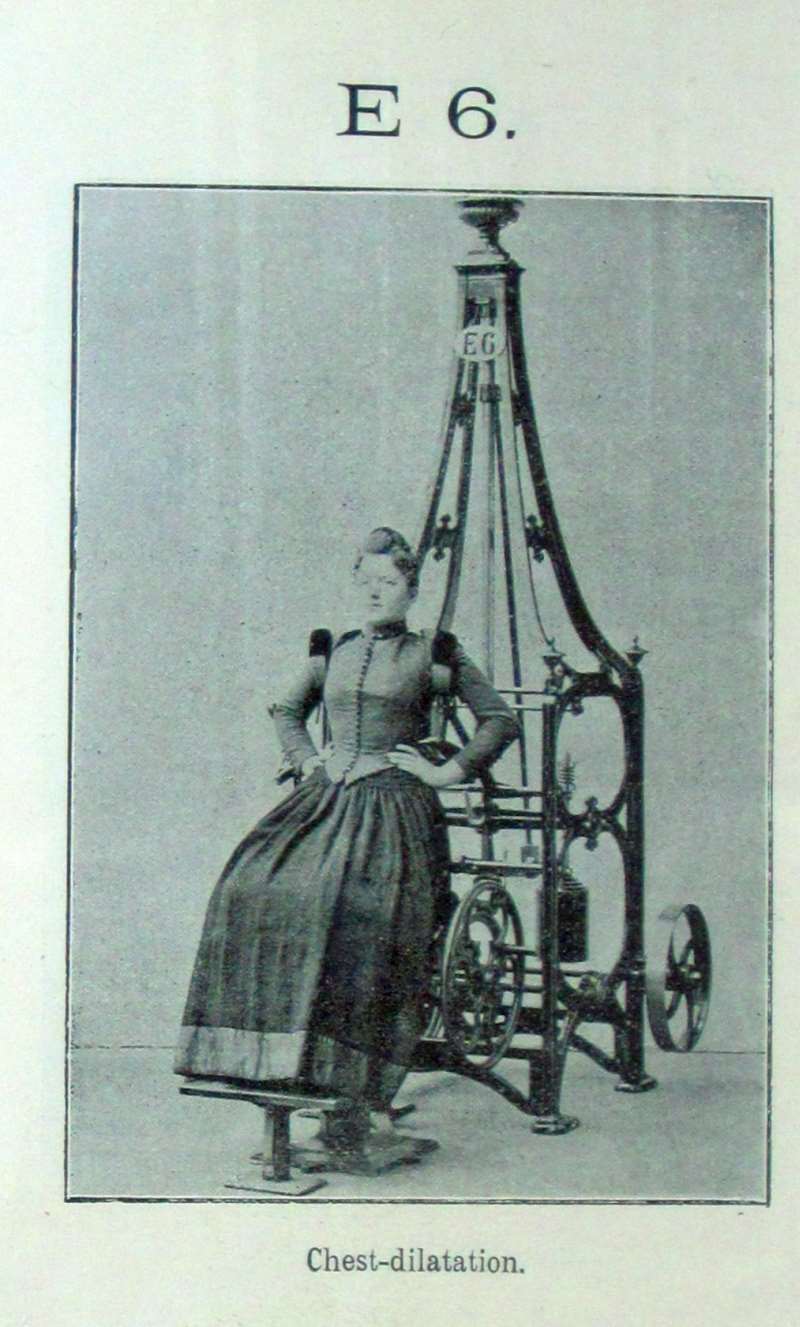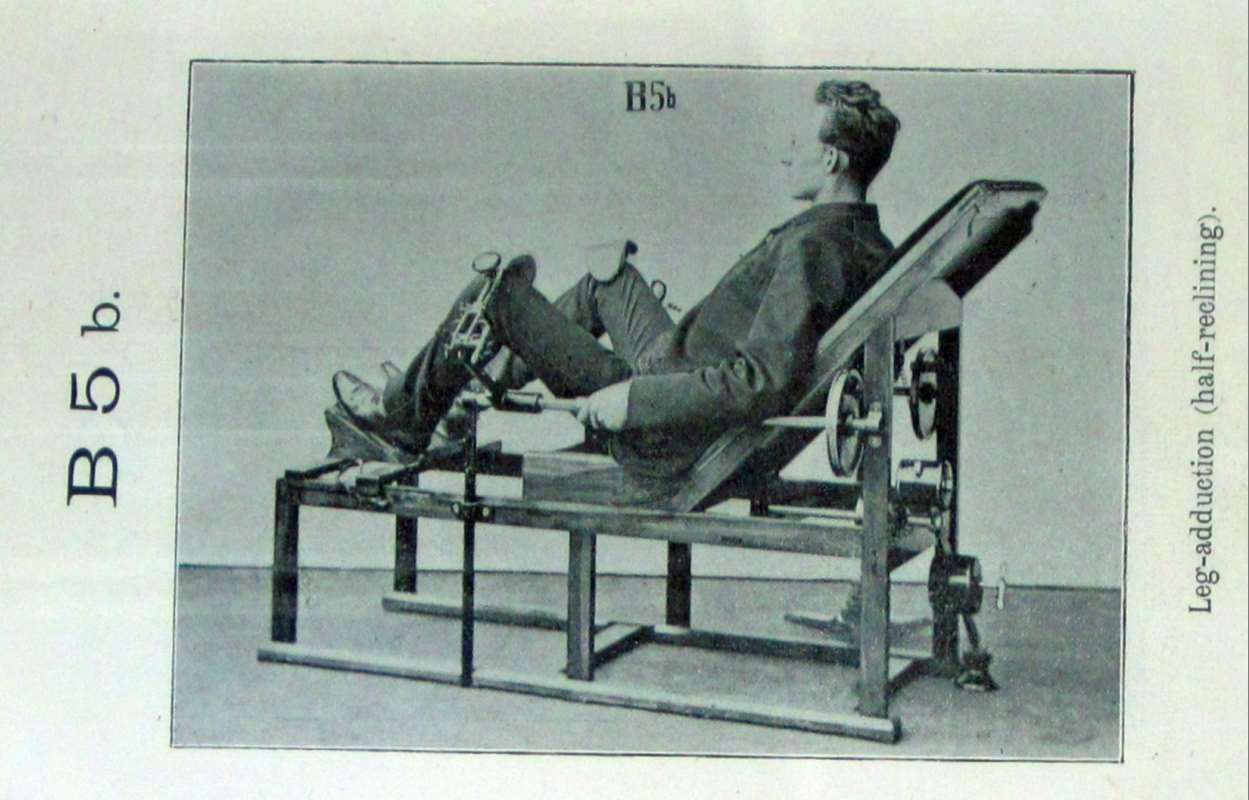It’s a gloriously sunny day here in Glasgow – what a wonderful start to the Commonwealth Games and the opening ceremony this evening. This second post on exercise as medicine looks at developments in exercise and health during the 19th century.
The first analysis of sports training in Great Britain was conducted by Sir John Sinclair (1754-1835) of Thurso in 1806. The results were published in The Code of Health and Longevity, or a concise view of the principles calculated for the preservation of health and the attainment of a long life. In particular, Sinclair discussed training for pedestrianism (competitive walking) and pugilism (boxing). He believed the main objective of sports training was to develop good ‘wind’ or stamina. In addition to exercise he recommended a diet of undercooked red meat, dry bread and old beer. The frontispiece of Sinclair’s work (shown below) depicts John Rovin in the 172nd year of his life and his wife Sarah in her 164th year.
More long-lasting therapeutically was the introduction of Swedish gymnastics in the early 19th century. This system of movements and positions was designed to increase flexibility, reduce pain, and maintain health. Used in schools, the army and as a medical healing process, the practice quickly spread beyond Sweden and has been a major influence on the development of physiotherapy. It was in Sweden, too, that physician Jonas Zander (1835-1920) devised a therapeutic method of exercise using mechanical apparatus. His medico-mechanical gymnastic method is described in a small pamphlet in the College Library printed in Stockholm in 1897 and produced by the Göranssons Mekinska Verkstad company, at that time the sole manufacturers of the equipment.
The pamphlet states that the Zander method has proved to be: ‘a recognized curative….It is true that the medical gymnastics has not as yet been generally studied at the Universities, but probably it will not be long before gymnastics is duly appreciated and classed among the other studies of Medical Faculties on account of its great services to medical science’.
The Zander method was recommended recommended for persons suffering from heart diseases, nervous problems, pulmonary diseases, gastric problems, rheumatism, curvatures of the spine amongst others and also to ‘remove the indirect consequences of injuries contracted by accidents occurring in the course of work’. The instruments are not a far cry from those used in a modern gym and today’s athletes.
You can find out more about our holdings by searching our library catalogue. If you wish to see a particular item please contact us by emailing library@rcpsg.ac.uk.





Leave a Reply